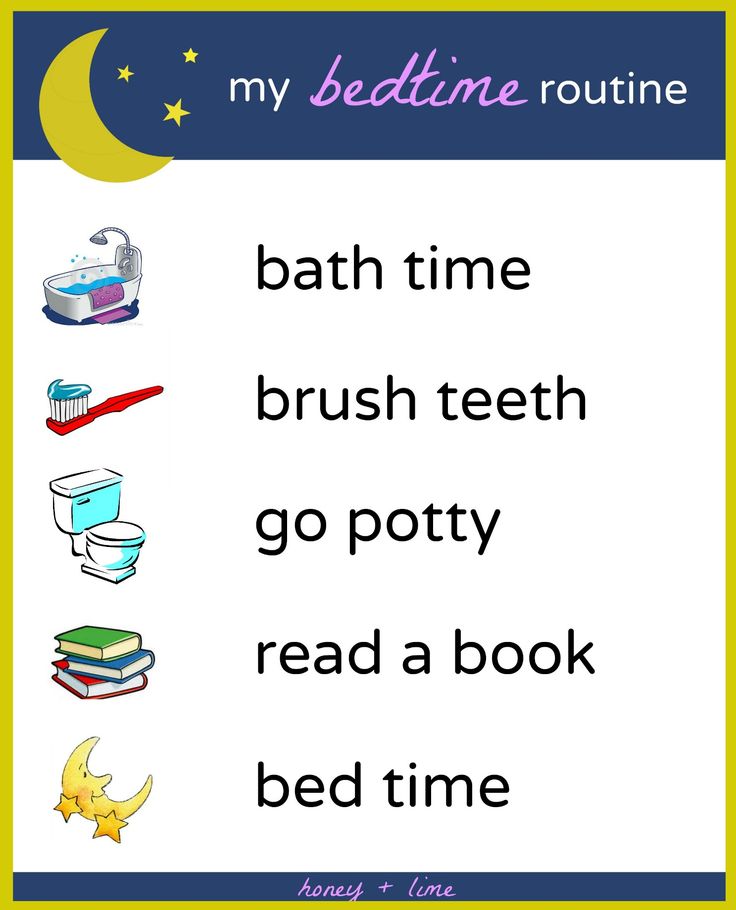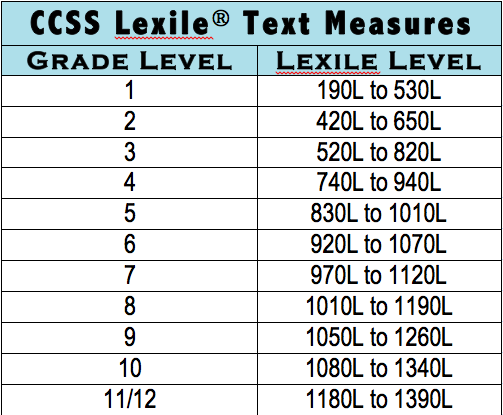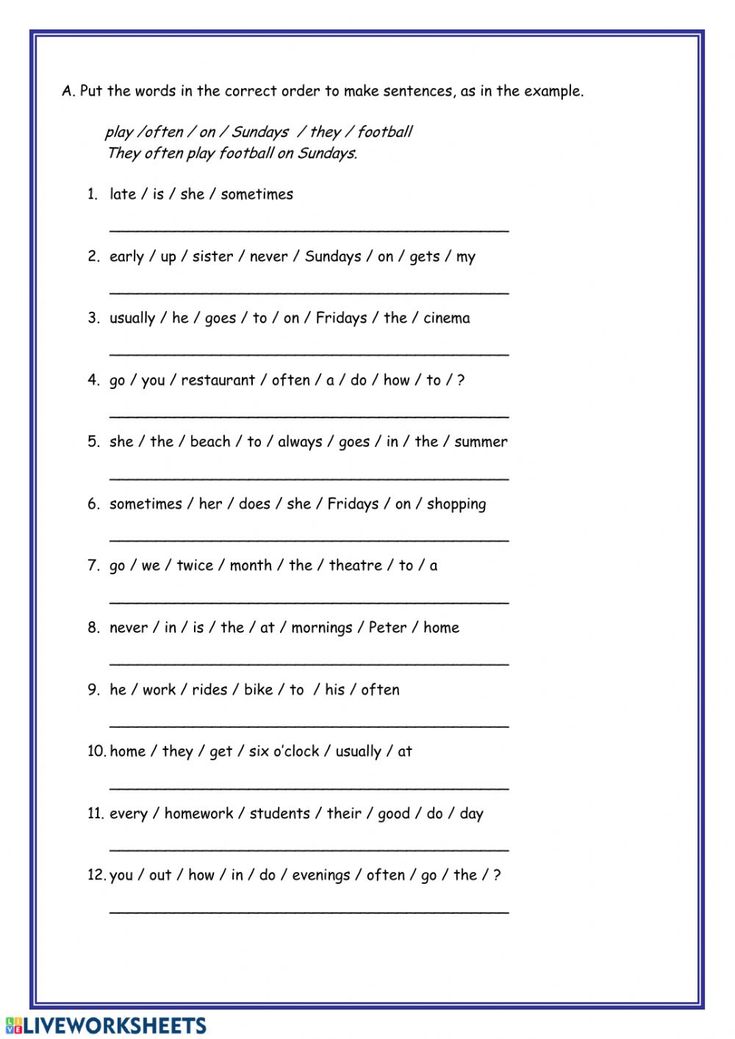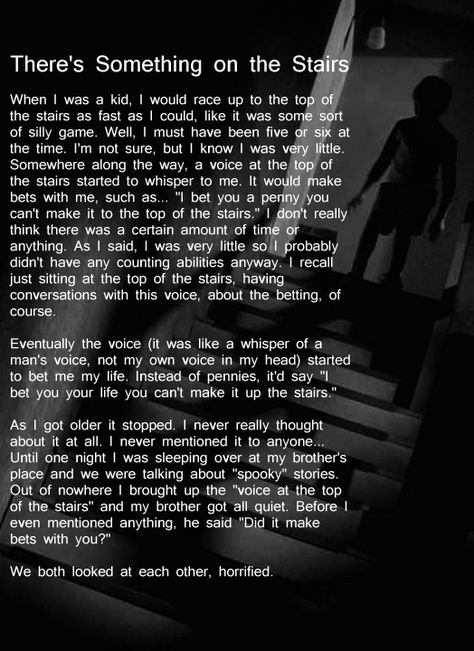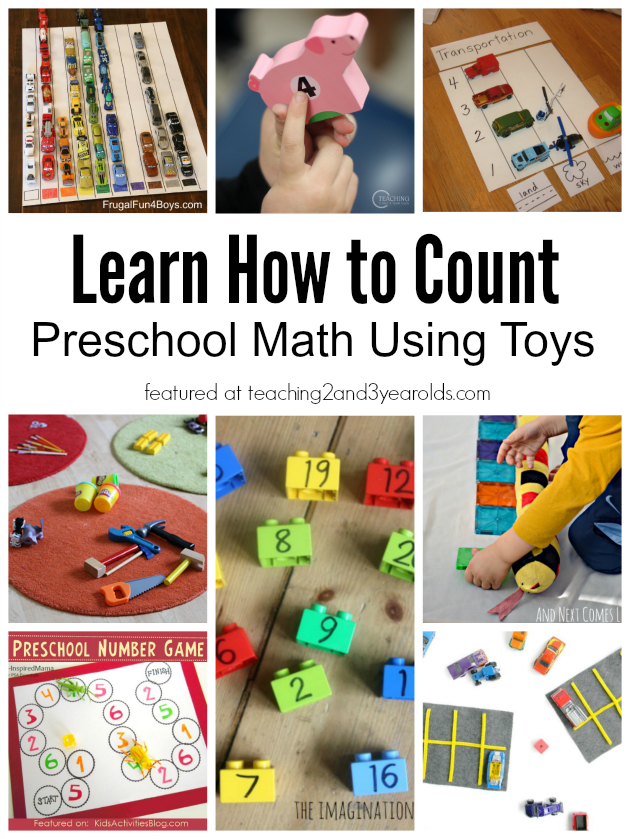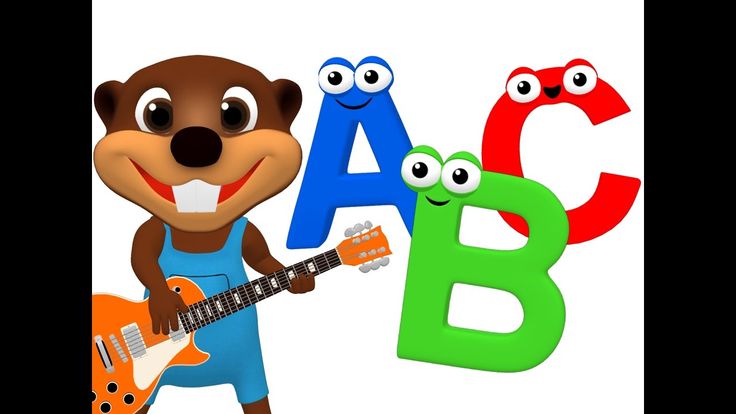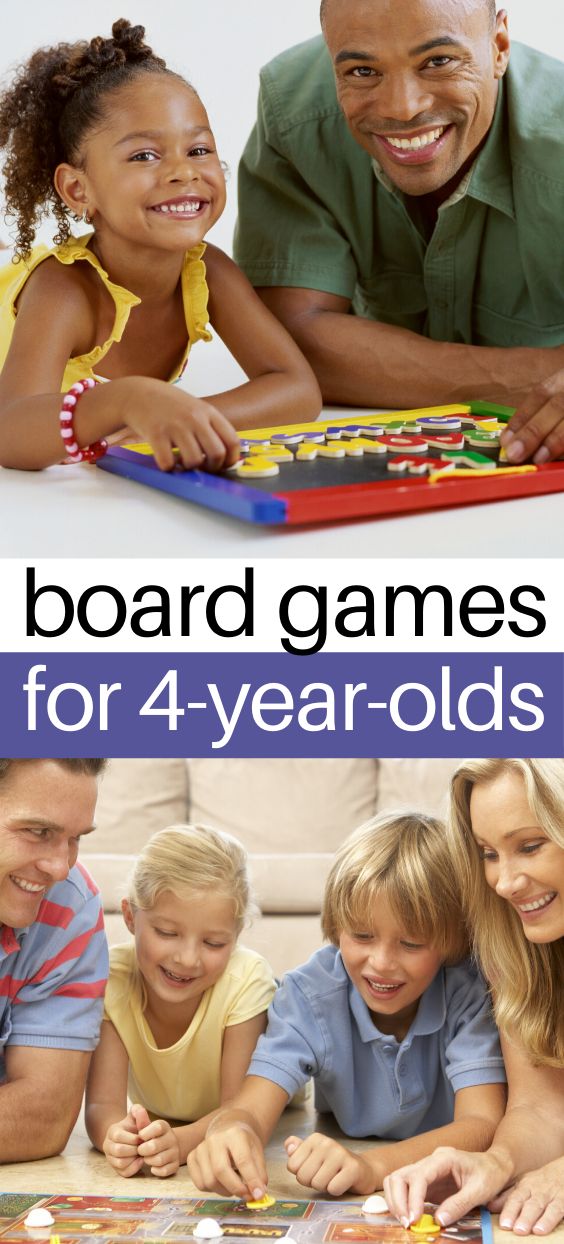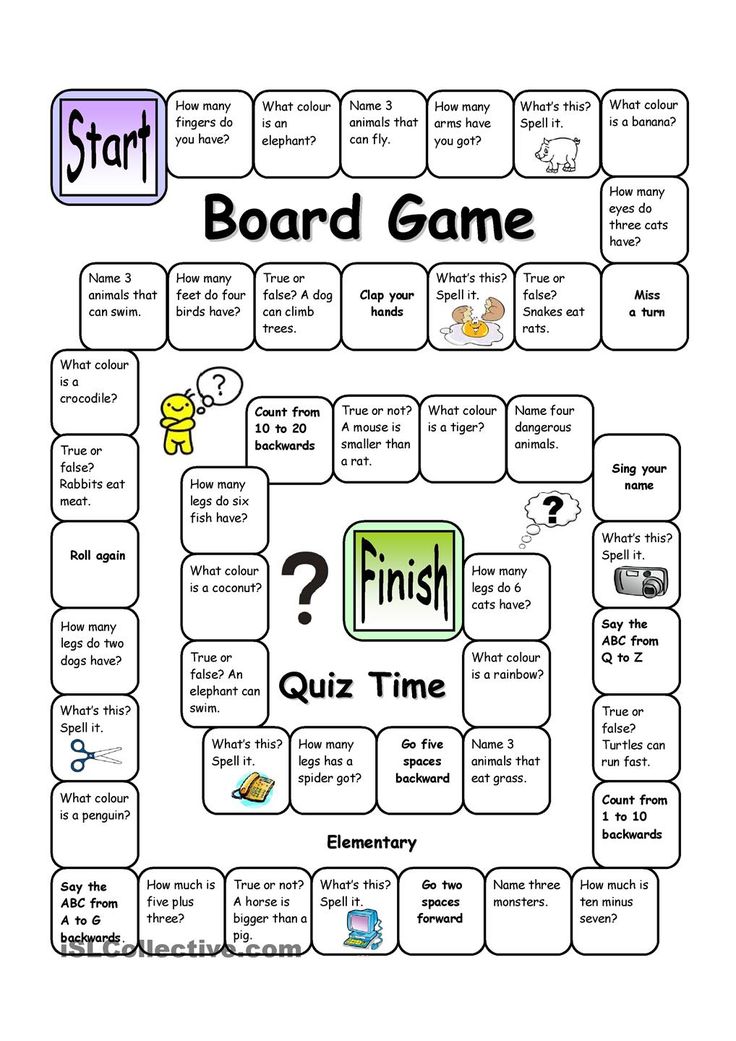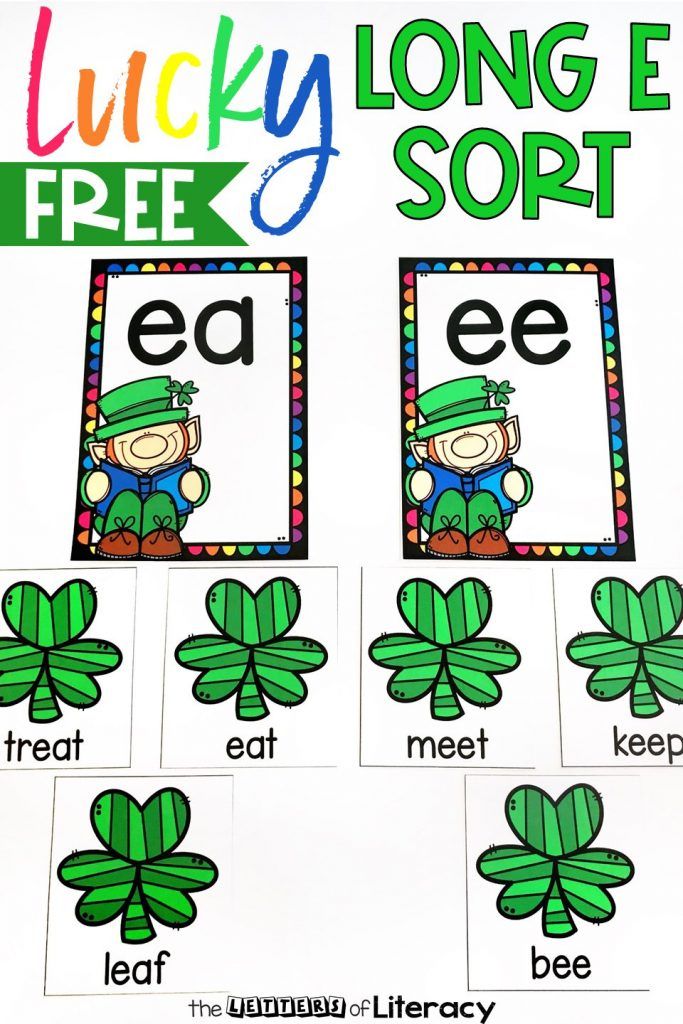Night time routines for toddlers
Perfecting Your Child’s Bedtime Routine
1.
Mindell, J. A., Telofski, L. S., Wiegand, B., & Kurtz, E. S. (2009). A nightly bedtime routine: impact on sleep in young children and maternal mood. Sleep, 32(5), 599–606. https://doi.org/10.1093/sleep/32.5.599
2.
Mindell, J. A., Leichman, E. S., Lee, C., Williamson, A. A., & Walters, R. M. (2017). Implementation of a nightly bedtime routine: How quickly do things improve?. Infant behavior & development, 49, 220–227. https://doi.org/10.1016/j.infbeh.2017.09.013
3.
Hale, L., Berger, L. M., LeBourgeois, M. K., & Brooks-Gunn, J. (2011). A longitudinal study of preschoolers' language-based bedtime routines, sleep duration, and well-being. Journal of family psychology : JFP : journal of the Division of Family Psychology of the American Psychological Association (Division 43), 25(3), 423–433. https://doi.org/10.1037/a0023564
4.
Kitsaras, G. , Goodwin, M., Allan, J., Kelly, M. P., & Pretty, I. A. (2018). Bedtime routines child wellbeing & development. BMC public health, 18(1), 386. https://doi.org/10.1186/s12889-018-5290-3
5.
Lee, S., Hale, L., Chang, A. M., Nahmod, N. G., Master, L., Berger, L. M., & Buxton, O. M. (2019). Longitudinal associations of childhood bedtime and sleep routines with adolescent body mass index. Sleep, 42(1), zsy202. https://doi.org/10.1093/sleep/zsy202
6.
Mindell, J. A., & Williamson, A. A. (2018). Benefits of a bedtime routine in young children: Sleep, development, and beyond. Sleep medicine reviews, 40, 93–108. https://doi.org/10.1016/j.smrv.2017.10.007
7.
American Academy of Pediatrics. (2012, March 26). The 4 B’s of Bedtime. HealthyChildren.org. Retrieved January 9, 2021, from https://www.healthychildren.org/English/healthy-living/sleep/Pages/The-4-Bs-of-Bedtime.aspx
8.
Prokasky, A. , Fritz, M., Molfese, V. J., & Bates, J. E. (2019). Night-to-Night Variability in the Bedtime Routine Predicts Sleep in Toddlers. Early childhood research quarterly, 49, 18–27. https://doi.org/10.1016/j.ecresq.2019.05.004
, Fritz, M., Molfese, V. J., & Bates, J. E. (2019). Night-to-Night Variability in the Bedtime Routine Predicts Sleep in Toddlers. Early childhood research quarterly, 49, 18–27. https://doi.org/10.1016/j.ecresq.2019.05.004
9.
Mindell, J. A., Li, A. M., Sadeh, A., Kwon, R., & Goh, D. Y. (2015). Bedtime routines for young children: a dose-dependent association with sleep outcomes. Sleep, 38(5), 717–722. https://doi.org/10.5665/sleep.4662
10.
De Stasio, S., Boldrini, F., Ragni, B., & Gentile, S. (2020). Predictive Factors of Toddlers' Sleep and Parental Stress. International journal of environmental research and public health, 17(7), 2494. https://doi.org/10.3390/ijerph27072494
11.
Staples, A. D., Bates, J. E., & Petersen, I. T. (2015). Bedtime routines in early childhood: prevalence, consistency, and associations with nighttime sleep. Monographs of the Society for Research in Child Development, 80(1), 141–159.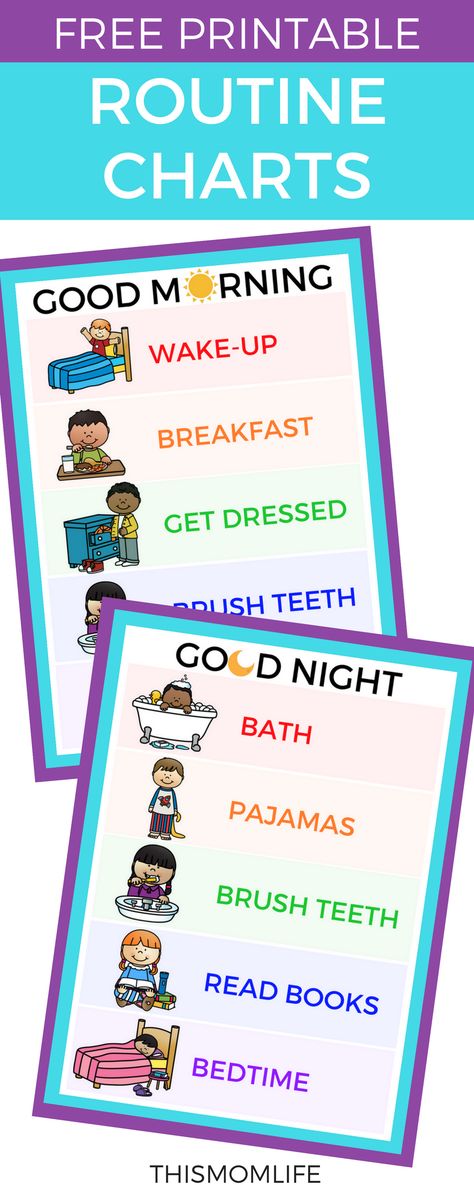 https://doi.org/10.1111/mono.12149
https://doi.org/10.1111/mono.12149
12.
Golem, D., Eck, K. M., Delaney, C. L., Clark, R. L., Shelnutt, K. P., Olfert, M. D., & Byrd-Bredbenner, C. (2019). "My stuffed animals help me": the importance, barriers, and strategies for adequate sleep behaviors of school-age children and parents. Sleep health, 5(2), 152–160. https://doi.org/10.1016/j.sleh.2018.11.003
13.
Levine R. S. (2001). Caries experience and bedtime consumption of sugar-sweetened food and drinks--a survey of 600 children. Community dental health, 18(4), 228–231. https://pubmed.ncbi.nlm.nih.gov/11789700/
14.
Iwata, S., Iwata, O., Iemura, A., Iwasaki, M., & Matsuishi, T. (2012). Sleep architecture in healthy 5-year-old preschool children: associations between sleep schedule and quality variables. Acta paediatrica (Oslo, Norway : 1992), 101(3), e110–e114. https://doi.org/10.1111/j.1651-2227.2011.02515.x
15.
American Academy of Pediatrics. (2013, September 5). Bedtime Routines for School-Aged Children. HealthyChildren.org. Retrieved January 9, 2021, from https://www.healthychildren.org/English/healthy-living/sleep/Pages/Bedtime-Routines-for-School-Aged-Children.aspx
(2013, September 5). Bedtime Routines for School-Aged Children. HealthyChildren.org. Retrieved January 9, 2021, from https://www.healthychildren.org/English/healthy-living/sleep/Pages/Bedtime-Routines-for-School-Aged-Children.aspx
Make Bedtime Easier with Your Toddler – Happiest Baby
By Dr. Harvey Karp, MD, FAAP
If you don’t already have a bedtime routine in place for your toddler, now’s the time to create one. Here’s a perfect bedtime routine for toddlers (ages 12-36 months).
When is a good bedtime for toddlers?
For many toddlers, expecting them to sleep from 7pm to 7am is too much to ask, but a 9:30pm bedtime is probably too late. Instead, the sweet spot tends to be between 8 and 8:30pm for toddlers, with lights-out by 8:30. But you’ll want to take cues from your child to figure out the best bedtime for them.
When kids fight bedtime, it’s a clue that bedtime is too early or too late. If bedtime is too early, you may notice that your child shows no signs of fatigue at bedtime and fights sleep for 30 to 60 minutes.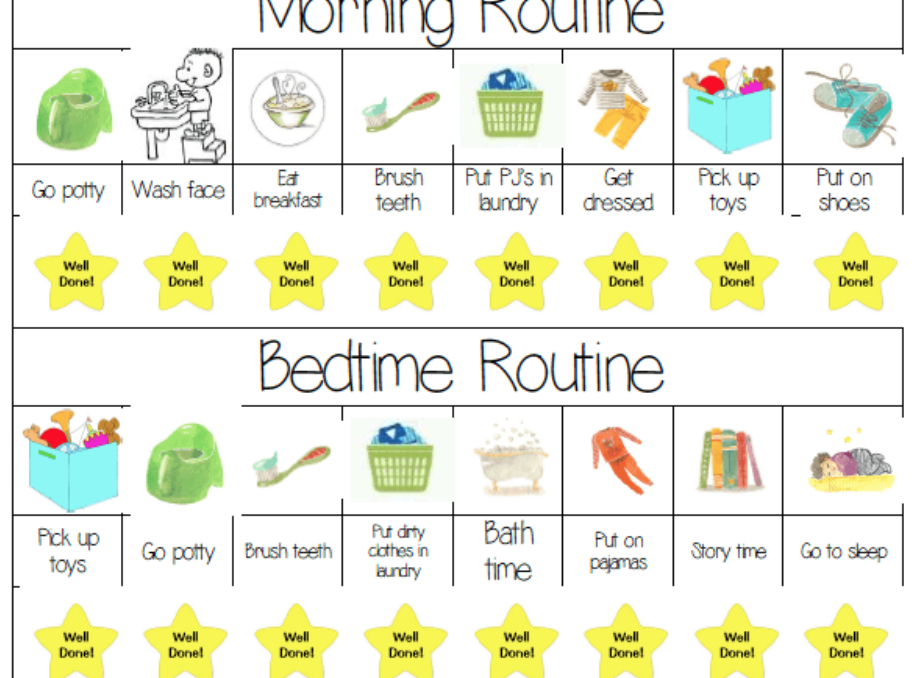 On the flip side, fighting sleep can also be a sign that bedtime is too late. If you notice she also has trouble waking in the morning and she shows clear signs of tiredness at bedtime, bedtime is too late. To get the just-right bedtime for your tot, try moving your routine by 15 minutes every two to three nights until you land on your new bedtime.
On the flip side, fighting sleep can also be a sign that bedtime is too late. If you notice she also has trouble waking in the morning and she shows clear signs of tiredness at bedtime, bedtime is too late. To get the just-right bedtime for your tot, try moving your routine by 15 minutes every two to three nights until you land on your new bedtime.
How can I make My toddler’s bedtime easier?
Overexcitement, discomfort, stubbornness, poor sleep cues, and the wrong bedtime can all lead to troubles at tuck-in time. One of the best ways to get past these sleep speed bumps is to work on bedtime skills—all day long. Set your toddler up for bedtime success during the day by making sure she gets lots of sunlight, fresh air, and outdoor play. Ensure that she’s eating healthy and is napping well. In addition, you’ll want to build a good relationship during the day so your child naturally wants to cooperate at night. Then, you’ll want to follow a bedtime routine like the one outlined below.
The Pre-Bed Routine for Toddlers (30-60 Minutes)
As the evening is drawing near, give your child a few signals that bedtime is approaching:
- Dim the lights in the house.
- Do quiet play (not roughhousing).
- Turn off screens.
- Put on white noise in the background.
- If you think your child has teething pain, ask your doctor if some medicine might help.
The “Get in Bed” Bedtime Routine (20-30 Minutes)
Each family picks a slightly different bedtime routine. The key is to make your routine pleasant, loving, calming, and consistent. Philadelphia researchers found that parents who started a 3-step bedtime routine (bath, massage, and quiet cuddling or singing a baby lullaby) saw success within 2 weeks. Their children (7-36 months old) fell asleep faster…and slept longer!
And, as an extra bonus, the toddlers were less likely to call out to their parents or get out of their crib or bed.
Besides baths and massage, here are other bedtime ideas and routines many parents opt for.
Some advice: When it’s time to start your routine, don’t invite resistance by asking, “Are you ready for bed?” Rather, start with an enthusiastic “Okay, kids! Time for bed!” Make a hand sign for “bedtime” and begin a countdown before you start to sing a sleepy-time song. (Just make up a little ditty with words like, “It’s sleepy-time!” or “Time to go to bed!”—perhaps to a familiar tune like “Happy Birthday.”)
As you sing, make a simple “let’s sleep” gesture—perhaps putting your hands together like a pillow and resting your head on them.
Right before you start your bedtime routine, make your child’s room perfect by:
- Dimming the lights.
- Keeping it cool (66°F-72°F is best).
- Warming the sheets (use a hot water bottle or little microwaveable wheat bag that’s removed when you tuck your munchkin in).
- Using a pleasant smell (a drop of lavender oil on the mattress or headboard is nice).
- Plugging in a small night-light.
- Putting up a dream catcher or a picture of Mommy and Daddy to “protect” your sweetie all night.

Loveys & Other Tips for Your Toddler’s Bedtime Routine
All kids enjoy saying “Good night!” to their toys. Prayers, lullabies, and bedtime stories are wonderful sleep steps, too, and a pacifier or a last sip of water can also help bring a sandman. (Offer water or caffeine-free mint or chamomile tea, but avoid cavity-promoting juices or sugary drinks at bedtime. Also, limit pre-sleep breastfeeding or sucking on a bottle to about 30 minutes, because milk and formula also create cavity-producing bacteria.)
Loveys like a blankie or a teddy bear are great allies in your bedtime routine. Think of them as stepping stones to maturity and independence. These faithful friends are called transitional objects because they give kids the courage to take steps away from their mama and daddy and transition into the great big world.
If your toddler doesn’t have a favorite lovey, you can pick a soft, cuddly one to carry around with you all day. Within a few weeks, your tot may start to get interested—associating the toy with your sweet cuddling—and a friendship with the lovey may begin.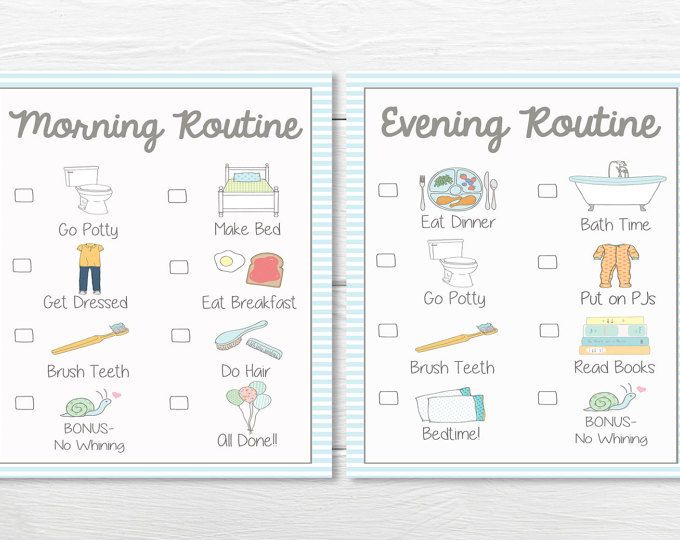
Make sure your lovey has no bits or buttons attached to it that might cause choking. And make sure you have a spare, just in case the first is lost or needs to be cleaned. Never remove a lovey as punishment. Far from making kids behave better, it can trigger resentment and insecurity.
And don’t forget that old familiar sleep cue, white noise.
But, as your toddler’s mind gets more active, you may find that softer sounds just don’t work and you need a rougher white noise. For just-right white noise, turn to SNOObie or SNOObear, both of which play specially filtered tracks for sleeping at rumbly low-pitch frequencies (plus extra sounds!).
White noise is an even better sleep cue than a teddy bear, because it’s easy to replace if you lose it, and it’s easier to wean later.
Other nice ideas for your bedtime routine might include:
- A warm bath (with the lights dimmed low).
- A coconut oil or cocoa butter massage (stroke the forehead from the eyebrows up to the scalp, slightly pulling your child’s eyes open with each stroke…this will make her want to close her eyes).
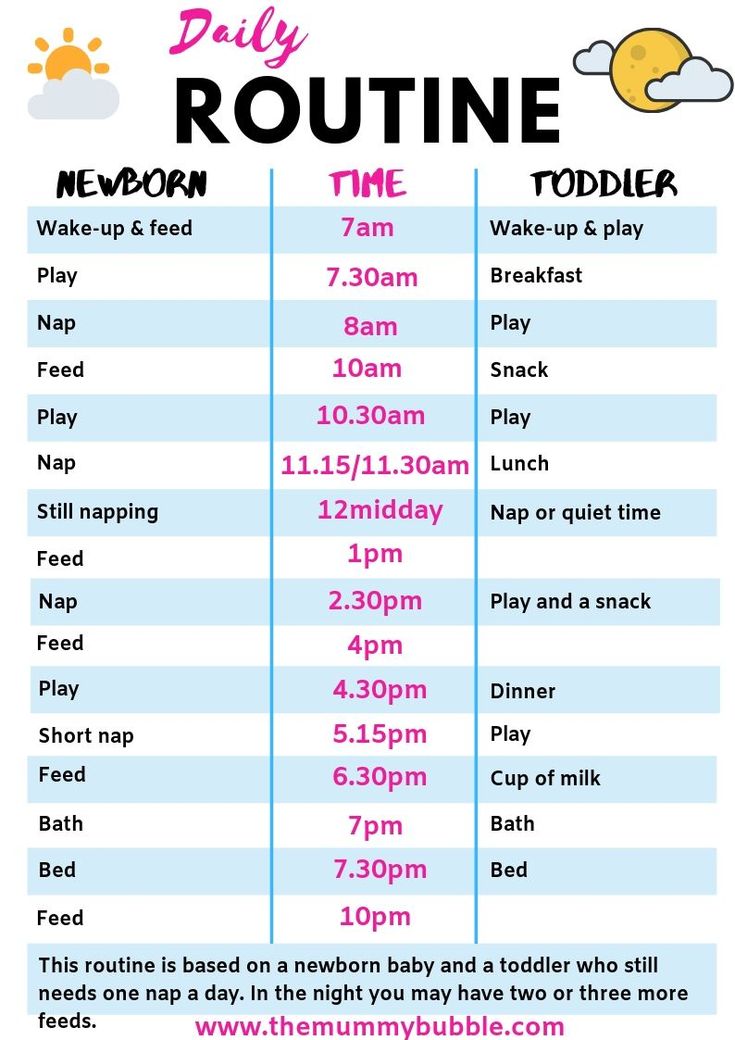
- Sprinkling a little “magic dust” around the room (sounds crazy, but it really works).
- And last, but certainly not least is my favorite Happiest Toddler bedtime routine, bedtime sweet talk.
An All-in-One Tool for Toddler Bedtime Routines
Have you met SNOObie? Every parent's new favorite sidekick is a soothing sound machine, a nightlight, and an OK-to-wake sleep trainer for toddlers. In other words, it's the perfect addition to sleepytime routines and wakeup routines! Learn more about how SNOObie can help with your bedtime routine.
About Dr. Harvey Karp
Dr. Harvey Karp, one of America’s most trusted pediatricians, is the founder of Happiest Baby and the inventor of the groundbreaking SNOO Smart Sleeper. After years of treating patients in Los Angeles, Dr. Karp vaulted to global prominence with the release of the bestselling Happiest Baby on the Block and Happiest Toddler on the Block. His celebrated books and videos have since become standard pediatric practice, translated into more than 20 languages and have helped millions of parents.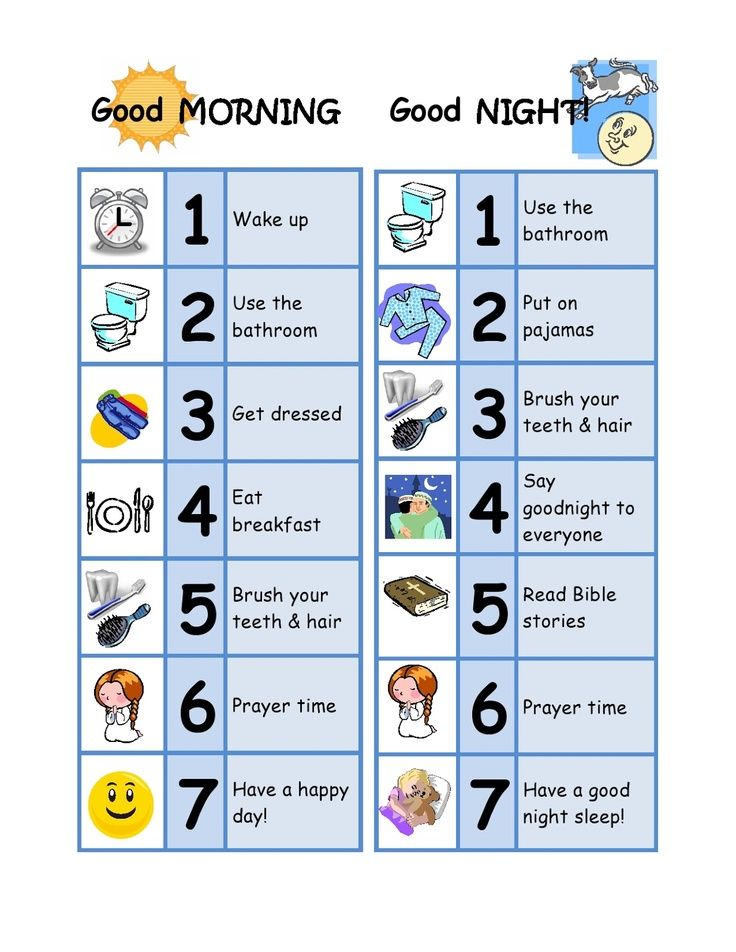 Dr. Karp’s landmark methods, including the 5 S’s for soothing babies, guide parents to understand and nurture their children and relieve stressful issues, like new-parent exhaustion, infant crying, and toddler tantrums.
Dr. Karp’s landmark methods, including the 5 S’s for soothing babies, guide parents to understand and nurture their children and relieve stressful issues, like new-parent exhaustion, infant crying, and toddler tantrums.
View more posts tagged, sleep
Have questions about a Happiest Baby product? Our consultants would be happy to help! Connect with us at [email protected].
Disclaimer: The information on our site is NOT medical advice for any specific person or condition. It is only meant as general information. If you have any medical questions and concerns about your child or yourself, please contact your health provider.
Evening rituals for babies
- Tags:
- Expert advice
- 0-1 year
- 1-3 years
Experts from the site "I am a Parent" have already shared ways to put the child to bed, as well as tips on when to do it.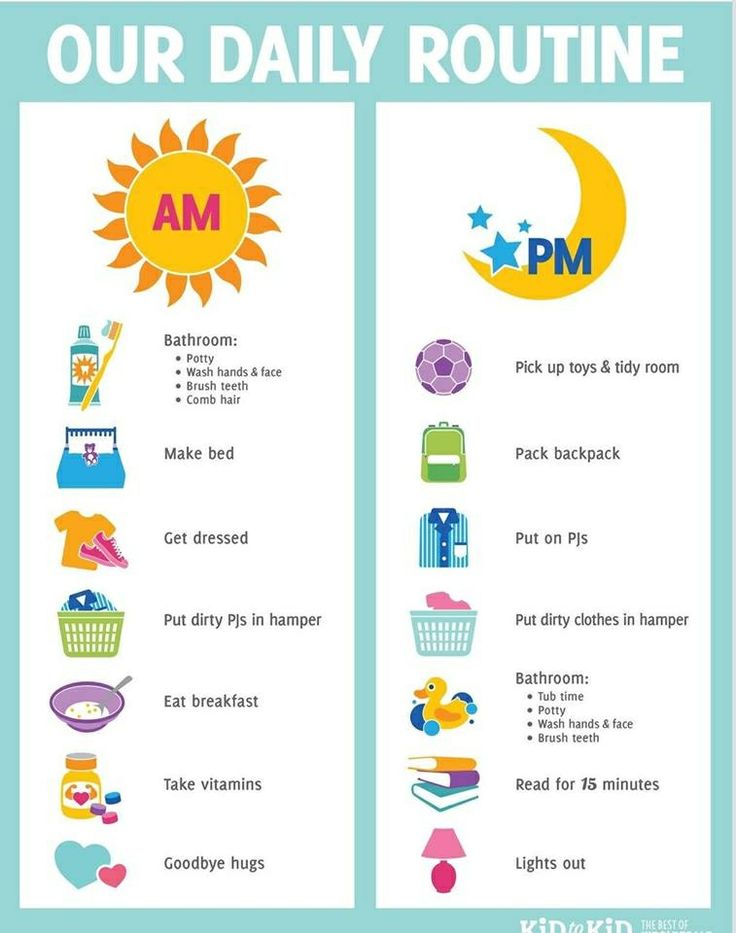 This time we will take a closer look at a variety of bedtime rituals for babies of different ages.
This time we will take a closer look at a variety of bedtime rituals for babies of different ages.
Many people know that the ritual before going to bed makes it easier to go to bed. However, it is not always clear which activities to choose depending on the age of the child. After all, bathing, which fits well into the ritual in the first months of a child's life, as they grow older, ceases to relax the baby. Reading a book is a choice for older children, and even then not always, some kids do not like to be read to. In this material, I am a Parent will talk about how you can create an individual bedtime ritual that both the baby and parents will love.
All bedtime rituals must be completed. That is, after the final point, there should no longer be games and active actions. Satisfy all the needs of the baby in advance, and after the completion of the ritual, do not go to communication. Otherwise, the ritual will not fulfill its main function - marking sleep.
Be persistent and consistent, and then in a few days the child will accept these rules, and he will go to bed with pleasure after your joint actions.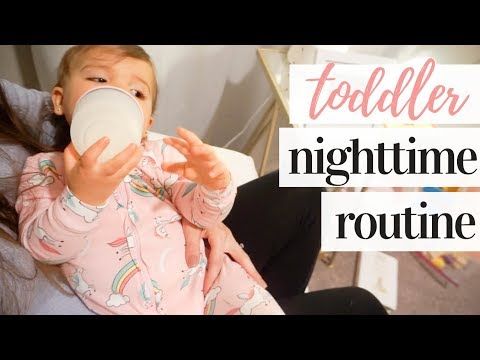
Bedtime rituals for babies 0-4 months
It is worth starting to accustom the baby to the evening ritual from birth, so that subsequently the child does not experience difficulty falling asleep or, even more so, he is not disturbed by nightmares.
Start the ritual with a bath
The evening ritual for the baby should be started almost immediately after the last day's sleep, so that the child does not have time to overdo it and get excited. A calm, relaxing bath is good. If you practice active swimming and diving, then it is better to do such training during the day, and in the evening, shortly before a night's sleep, either refuse to swim at all, or spend it in a calm environment and try not to "play out" and not overload the child.
Feed your baby in a darkened room
After bathing, it's time to eat. It doesn't matter what type of feeding you choose. Feeding before bedtime is best done in a darkened room, with low, not exceeding 50 decibels, white noise or calm familiar music.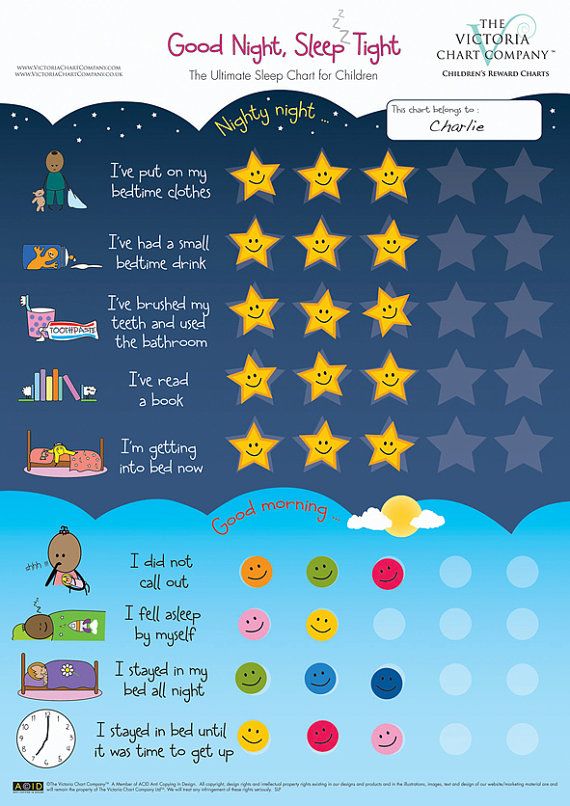 You can sing a song or tell a poem about a dream. Often at this age, babies fall asleep on their chest or with a bottle. If possible, try to put an awake child in the crib, then he will gradually form the skill of falling asleep on his own. But for now, it’s not worth insisting: it turned out - great, fell asleep on the chest or with a bottle - also good.
You can sing a song or tell a poem about a dream. Often at this age, babies fall asleep on their chest or with a bottle. If possible, try to put an awake child in the crib, then he will gradually form the skill of falling asleep on his own. But for now, it’s not worth insisting: it turned out - great, fell asleep on the chest or with a bottle - also good.
Comment on the child's preparation for sleep
The child before a night's sleep is calmed by the monotonous repetition by the mother of what is happening and will happen. You can indicate your actions in a calm, quiet voice: “Now I will put on pajamas for you, then you will eat and you will sleep sweetly. Here you are already in your pajamas, now you will eat and fall asleep soundly.
Follow the sequence of operations
It is important to remember the sequence of operations. It should always be the same: night after night, in the same order, wipe the baby after bathing, put on a diaper, pajamas, swaddle, feed.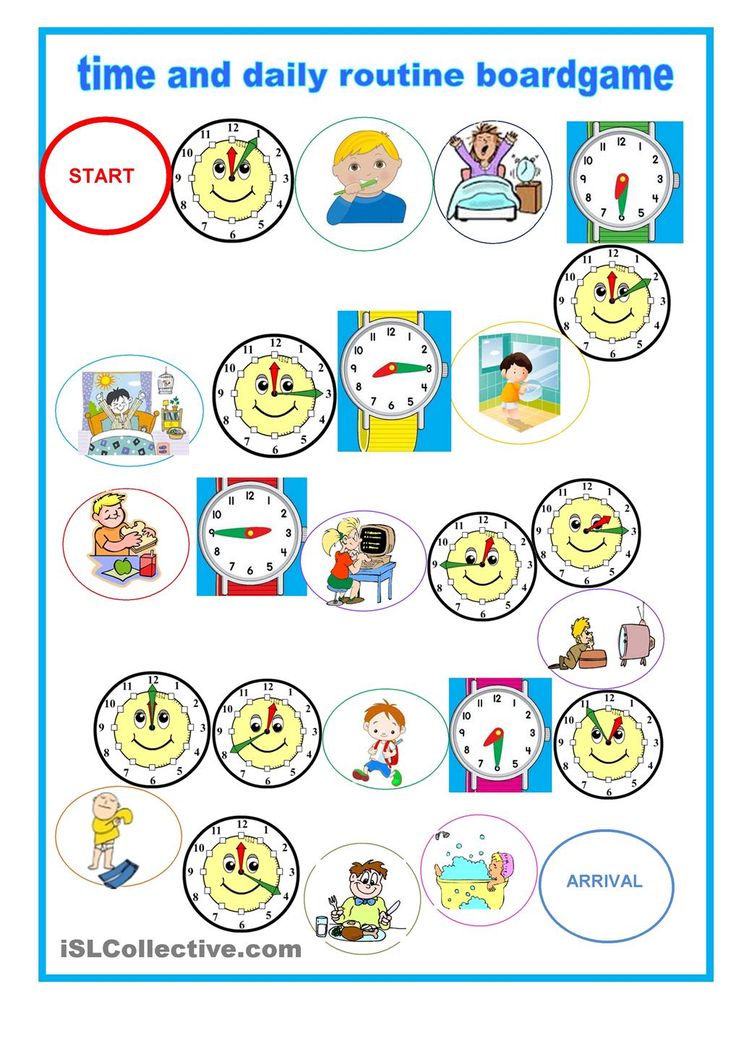 You can choose the actions that suit your situation, but it is very important to follow the sequence chosen once.
You can choose the actions that suit your situation, but it is very important to follow the sequence chosen once.
If you repeat these actions every evening and try to relax yourself during the ritual, then the baby will fall asleep more readily and sleep better at night.
Bedtime rituals for babies aged 4-10 months
Around four months of age, babies change their sleep patterns. And often, even well-sleeping babies begin to wake up more often and have difficulty falling asleep.
Start refusing feeding and bathing as part of the ritual
Feeding and bathing can and should be taken out of the ritual. Water procedures can have the opposite effect on a growing baby. In addition, while bathing, it is very easy to miss signs of fatigue, and it will be difficult for the baby to fall asleep later due to overwork. If you absolutely want to leave traditional bathing as part of your evening routine, then separate it from the bedtime ritual by feeding outside the bedroom.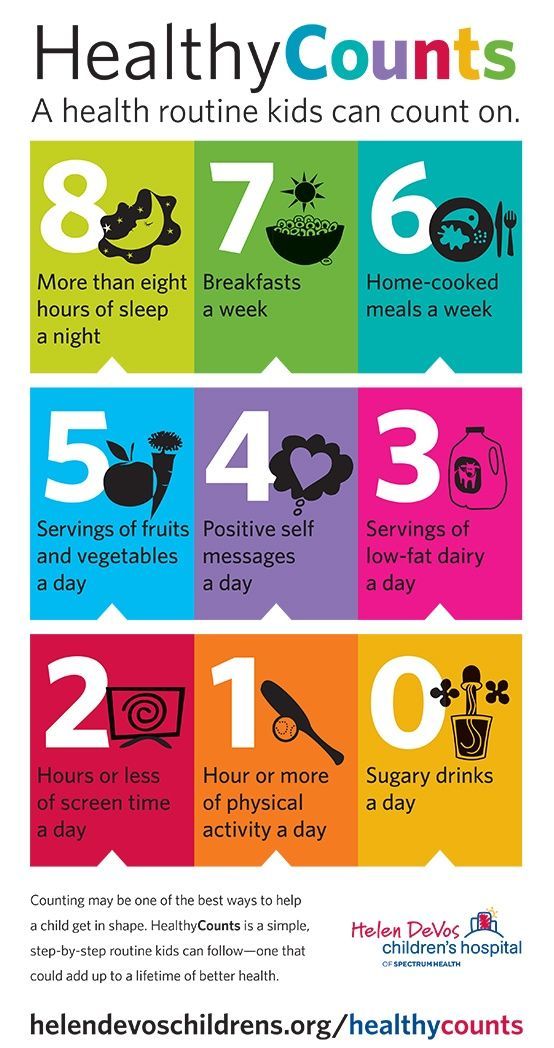 And after dinner, go to the bedroom. It's still good to use quiet white noise or your usual soothing music.
And after dinner, go to the bedroom. It's still good to use quiet white noise or your usual soothing music.
Introduce additional bedtime activities into the ritual
At the age of four to ten months, you can and should introduce additional activities with the participation of the child: close the curtains together and turn off the big light, look in the mirror and say “good night” to your reflection , start looking at picture books where everyone sleeps. As before, a mother's song or a poem about sleep will be a wonderful part of the ritual.
Choose a sleep toy
A projector with a starry sky or changing pictures and soft music is suitable for the role of such a toy. The toy will help the child stay calm in the crib, and after a while it will turn itself off.
Bedtime rituals for children aged 10 months - 1.5 years
At this age, the child can and wants to become increasingly involved in the ritual.
Start reading “sleepy” books to your child
For many children, right now is the time for musical “sleepy” books, where all animals and babies go to bed.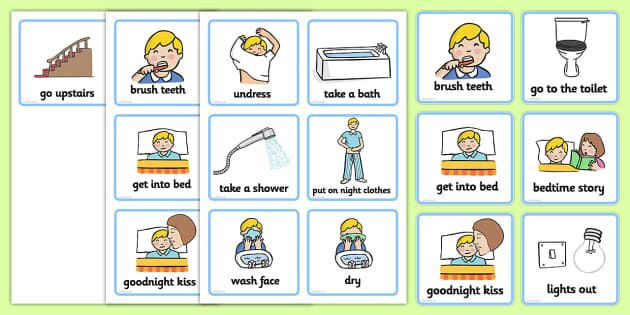 So far, the text is not important to the child, but the pictures are something that can interest and set in a calm mood. But do not worry if the baby has not yet shown interest in books.
So far, the text is not important to the child, but the pictures are something that can interest and set in a calm mood. But do not worry if the baby has not yet shown interest in books.
Talk to your child before going to bed
An equally good part of the ritual would be the communication of the mother or any caring close adult with the child. You can carry the baby in your arms, talk about how the day went.
Choose a bedtime soft toy
This is the age at which a child is most likely to welcome their own sleep mate. Choose or buy a soft toy that is as safe as possible, without small and hard parts, introduce your baby to it, tell that now this friend will guard the baby’s sleep and needs the baby to put it down. It is important that the toy lives in the crib and does not participate in everyday games.
Bedtime rituals for children aged 1.5 years and older
From the age of one and a half, children are ready for long rituals and bedtime reading.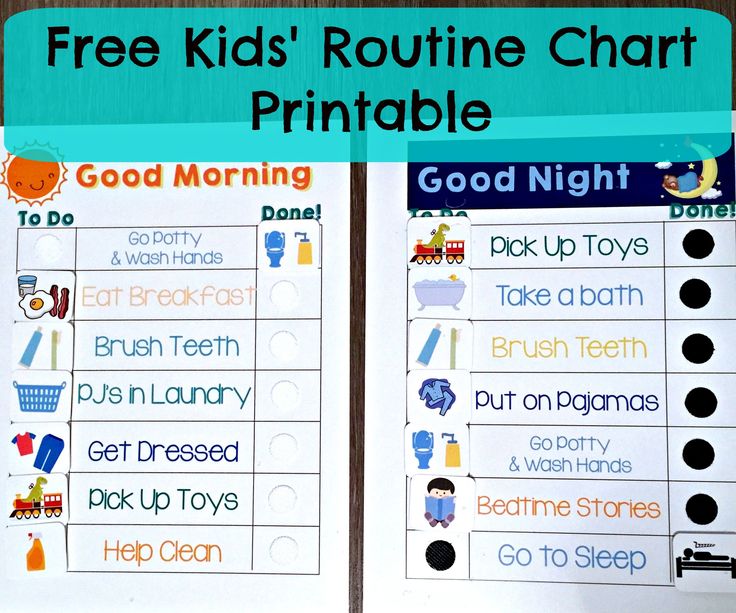
Start reading fairy tales to your child
The complexity and duration of fairy tales can be increased gradually. And in the beginning, it's good if these are still stories about sleep. Now there is a fairly large selection of books specifically for the evening ritual.
It is very important to designate the duration of the reading in advance. For example, it could be two stories or 15 minutes. It is important to warn the baby about this and not change your mind. However, you can go for a little trick: initially offer only one story or five minutes of reading, and when the child asks for more, then agree to another fairy tale or another five minutes. You will know that the reading will take longer, but by agreeing you will help the child to feel its importance and that his wishes are taken into account.
Choose quiet games that your baby will enjoy
If your baby doesn't want to read, you can suggest other quiet activities before bed. It is undesirable that these be cartoons and action.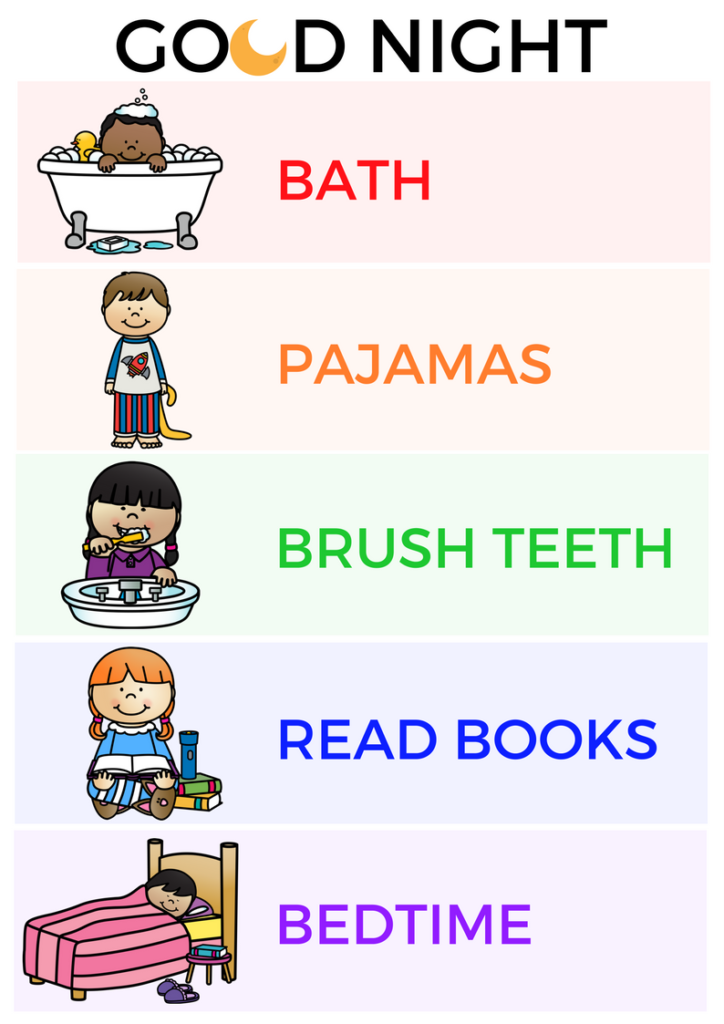 Here are some good options: putting together a simple puzzle, putting toys to bed, talking about the past day and planning for the next, one or two games of a calm bingo-type card game.
Here are some good options: putting together a simple puzzle, putting toys to bed, talking about the past day and planning for the next, one or two games of a calm bingo-type card game.
You can come up with some unique ritual. Try writing fairy tales about toys with your baby, or hiding an object under the pillow in advance and asking the child to guess what it is, and then write a story about this object. Approach the creation of the ritual creatively, and the child will definitely appreciate it!
A necessary component of any ritual is the relaxed state of the parents. Try not to rush and spend this time with maximum attention to the baby. Make sure that the chosen activities bring pleasure to you. So, if mom does not like to sing, then it is better to do without lullabies. After all, the ritual before going to bed is what you have to do every night for several years.
Child psychologist Nikolai Lukin, an expert on the I am a Parent website, tells what to do if a child is afraid to sleep alone:
What's your mom like? Find out by taking the test on the website "I am a Parent"!
Margarita Levchenko
Daily routine for a child under 1 year old
Daily routine is a system for distributing periods of sleep and wakefulness, meals, hygiene and health procedures, activities and independent human activities throughout the day.
Compliance with a rational daily routine corresponding to the age characteristics of the child contributes to his healthy growth and development. Getting used to performing various types of activities at the same time, the child is prepared for the upcoming type of activity at every moment of time, which ensures their easier and faster implementation. Compliance with the correct daily routine provides a good mood for the child and maintains a keen interest in the study of the world around him, contributing to his normal motor and psychoverbal development.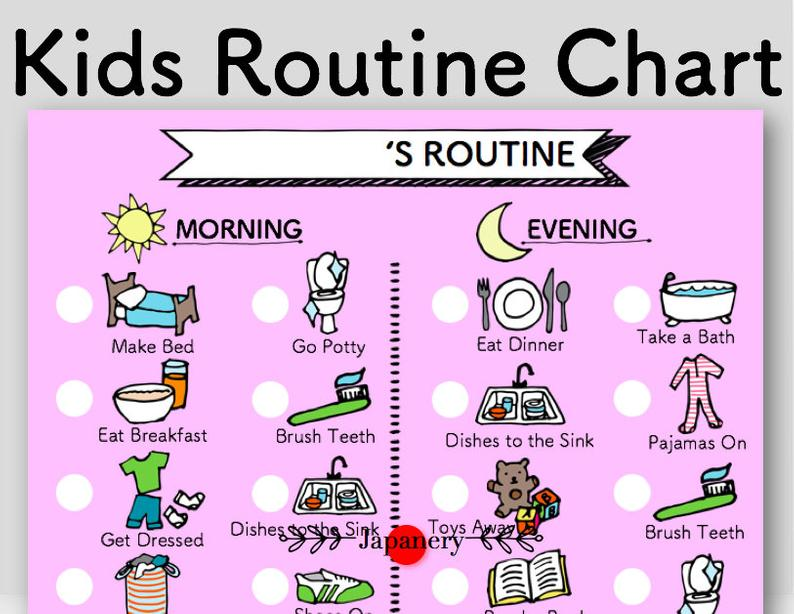
The child's daily routine includes the following obligatory elements: diet, time spent outdoors during the day, frequency and duration of sleep, mandatory classes to develop skills in accordance with age, free time.
In the first months after birth, a healthy newborn baby sleeps most of the day, as all external stimuli are very strong for the nervous system of a child who is accustomed to a cozy intrauterine environment, and cause its rapid exhaustion. As the child grows older, the duration of sleep gradually decreases and the time of wakefulness increases.
| Age | Daytime sleep mode | Night sleep | Wake mode |
| Birth to 2 months | 6 x 2.5 hours | 6 hours | During feeding |
| 2-4 months | 5 times 2-2.5 hours | 6.5 hours | 4 x 1.5 hours |
| 4-6 months | 4-5 times for 2 hours | 7 hours | 4 times 2 hours |
| 6-9 months | 3-4 times for 1.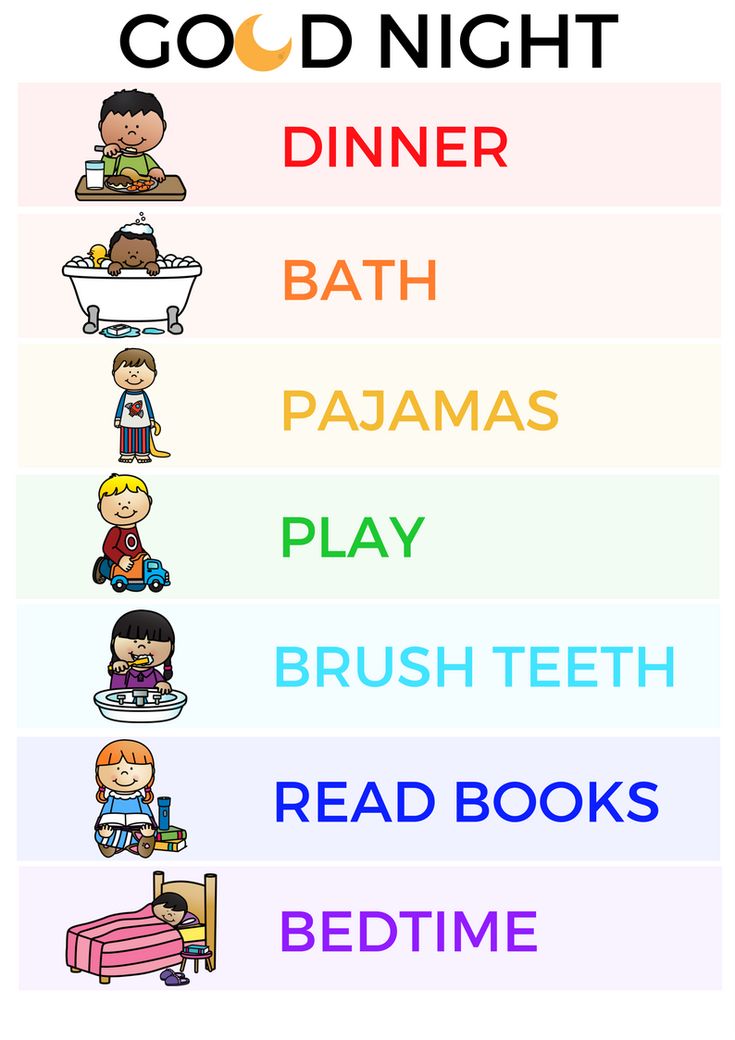 5-2 hours 5-2 hours | 8 hours | 4 x 2.5 hours |
| 9-12 months | 2 x 1.5-2 hours | 9-10 hours | 4 times 3-4 hours |
Closely related to the sleep-wake mode is the feeding mode of the baby. The sleep of a child in the first months of life is very sensitive and is easily disturbed under the influence of various extraneous stimuli, including hunger.
| Age | Mode | Example |
| Birth to 2 months | 7-8 times, every 3 hours | 6,9,12,15,18,21,24 (no night feeding) |
| From 2 to 6 months | 6-7 times, every 3.5 hours | 6, 9.30, 13, 16.30, 20, 23.30 (without night feeding) 6, 9.30, 13, 16.30, 20, 23.30, 03 (with night feeding) |
| From 7-12 months | 5 times, every 4 hours | 6,10,14,18,22 |
A child's stay in the open air is essential in the daily routine.